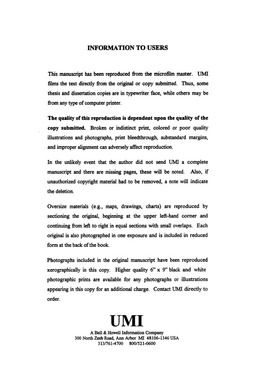| dc.contributor.advisor | Lancaster, E. L., | en_US |
| dc.contributor.author | Kerr, Clara Barbee. | en_US |
| dc.date.accessioned | 2013-08-16T12:29:34Z | |
| dc.date.available | 2013-08-16T12:29:34Z | |
| dc.date.issued | 1997 | en_US |
| dc.identifier.uri | https://hdl.handle.net/11244/5457 | |
| dc.description.abstract | Scores from the Maslach Burnout Inventory and other data were reported in bar charts, boxplots and tables. Relationships were examined between scores on the Maslach Burnout Inventory and self-evaluated stress and personal and professional elements considered potential stressors. Charts were generated by the statistical computer program SPSS 6.1 for Windows. | en_US |
| dc.description.abstract | Variables considered possible stressors were gender, age, first career choice, educational background, percent of income from teaching, type of teaching and number of students in each type of teaching. Scores from the three subsections of the Maslach Burnout Inventory (Emotional Exhaustion, Depersonalization and Personal Accomplishment) and self-evaluated stress reported in a Likert scale were indicators of stress reported by respondents. | en_US |
| dc.description.abstract | The following conclusions are based on the results of the investigation: (1) Piano teachers in the study ranked the following to be the top five stressors: unprepared lessons, negative attitude of students, apathy of students, lack of cooperation of parents and lack of time to keep up their own practice. Respondents reported that teaching preschoolers in groups, students in grades 6-9 in private lessons and group teaching were the most stressful teaching situations. (2) Teachers with more years of experience and those teaching fewer students did not report less stress. (3) Successful strategies for coping with stress reported by the respondents were: religion, exercise, reading, diet and nutrition and social support. (4) Responses from the piano teachers in this survey did not indicate that stress and burnout are widespread in Oklahoma. | en_US |
| dc.description.abstract | This study investigated stressors and teaching conditions producing stress in independent piano teachers in Oklahoma. It also examined coping strategies found to be effective by the respondents. Data for the study were collected through a questionnaire designed by the author that included five sections on teaching situations, personal circumstances, sources of stress, coping strategies and the Maslach Burnout Inventory (Form Ed.). The results of this study are based on responses from one hundred piano teachers (69.31% response rate) representing the four geographic areas of Oklahoma designated by the Oklahoma Music Teachers Association Directory of Members. The respondents consisted of ninety-six females and four males with teaching experience ranging from three to seventy-one years. | en_US |
| dc.format.extent | xiv, 186 leaves : | en_US |
| dc.subject | Music teachers Job stress Oklahoma. | en_US |
| dc.subject | Piano Instruction and study. | en_US |
| dc.subject | Education, Music. | en_US |
| dc.subject | Burn out (Psychology) | en_US |
| dc.subject | Psychology, Industrial. | en_US |
| dc.subject | Stress (Psychology) | en_US |
| dc.title | Stress and burnout in independent piano teachers in Oklahoma. | en_US |
| dc.type | Thesis | en_US |
| dc.thesis.degree | Ph.D. | en_US |
| dc.thesis.degreeDiscipline | School of Music | en_US |
| dc.note | Source: Dissertation Abstracts International, Volume: 58-02, Section: A, page: 0410. | en_US |
| dc.note | Major Professor: E. L. Lancaster. | en_US |
| ou.identifier | (UMI)AAI9722745 | en_US |
| ou.group | Weitzenhoffer Family College of Fine Arts::School of Music | |
